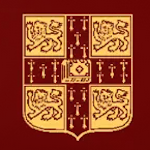Pharaoh (Par`oh), the Hebraized title of the king of Egypt, in Egyptian Per-`o; Pheron in Herodotus represents the same. Its combination with the name of the king, as in PharaohNecho, Pharaoh-Hophra, is in accordance with contemporary native usage: the name of the earlier Pharaoh Shishak (Sheshonk) is rightly given without the title. In hieroglyphic a king bears several names preceded by distinctive titles. - In the IVth Dynasty there might be four of the latter: (1) identifying him with the royal god Horus; the name is commonly written in a frame Ijllll representing the façade of a building, perhaps a palace or tomb, on which the falcon stands. (2) connecting him with the vulture and uraeus goddesses, Nekhabi and Buto of the south and north. (3) a hawk on the symbol of gold, signifying the victorious Horus.
(4) doms of Upper and Lower Egypt, to be read stni, " butcher(?)" and byti, " beekeeper(?)" The personal name of the king followed (4), and was enclosed in a cartouche OI apparently symbolizing the circuit of the sun which alone bounded the king's rule. Before the IVth Dynasty the cartouche is seldom found: the usual title is (1), and (3) does not occur. In the Vth Dynasty the custom began of giving the king at his accession a special name connecting him with the sun: this was placed in the cartouche after (4), and a fifth title was added: (5)Si Si-re, "son of the Sun-god," to precede a cartouche containing the personal name. The king was briefly spoken of by his title stni (see 4), or f, "his service," or Ity, " liege-lord." These titles were preserved in the sacred writing down to the latest age. An old term for the royal palace establishment and estate was Per-`o, "the Great House," and this gradually became the personal designation of Pharaoh (cf. the Grand Porte), displacing all others in the popular language. (F. LL. G.)


